Colonne del Tempio Dorico
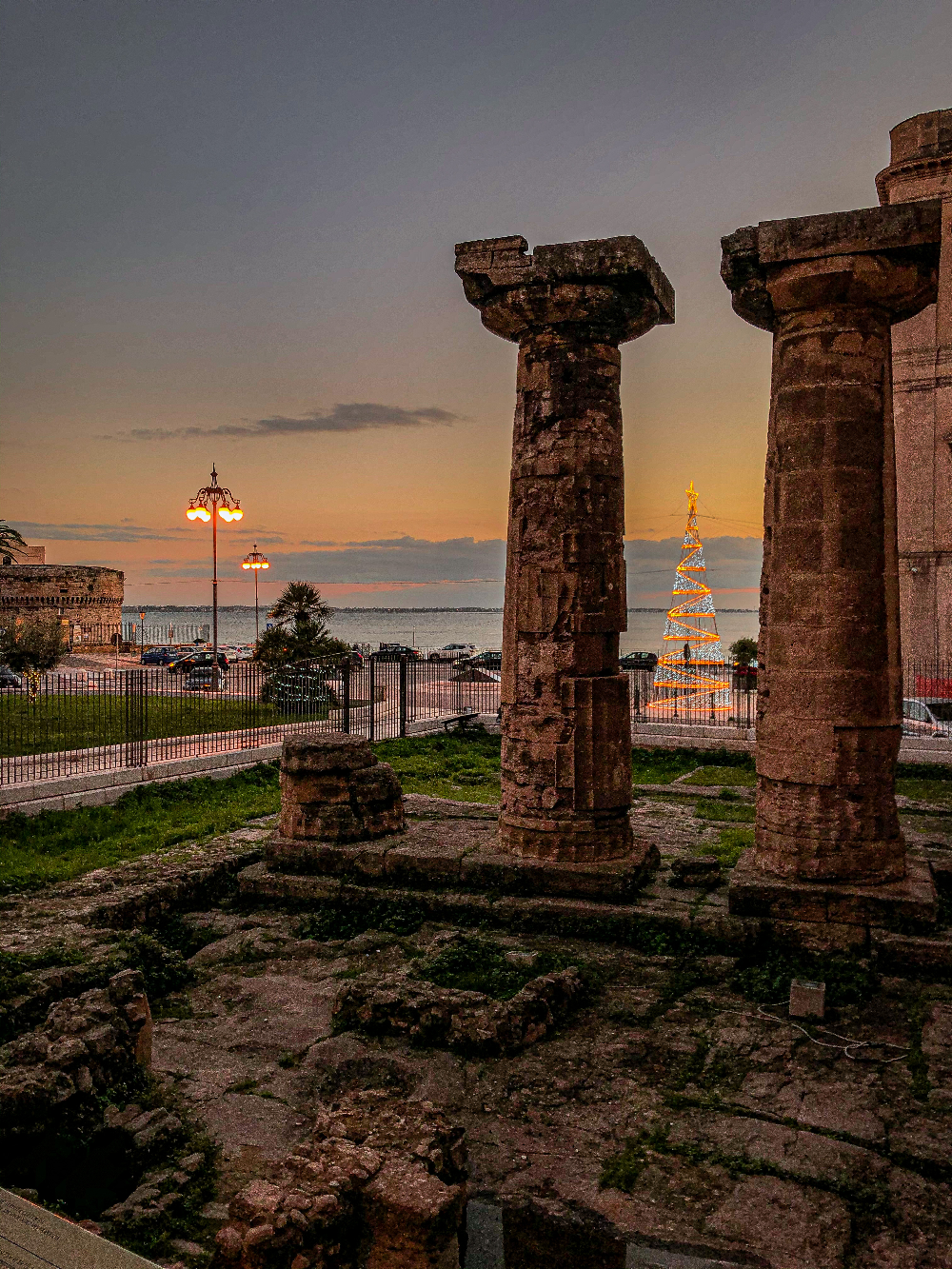
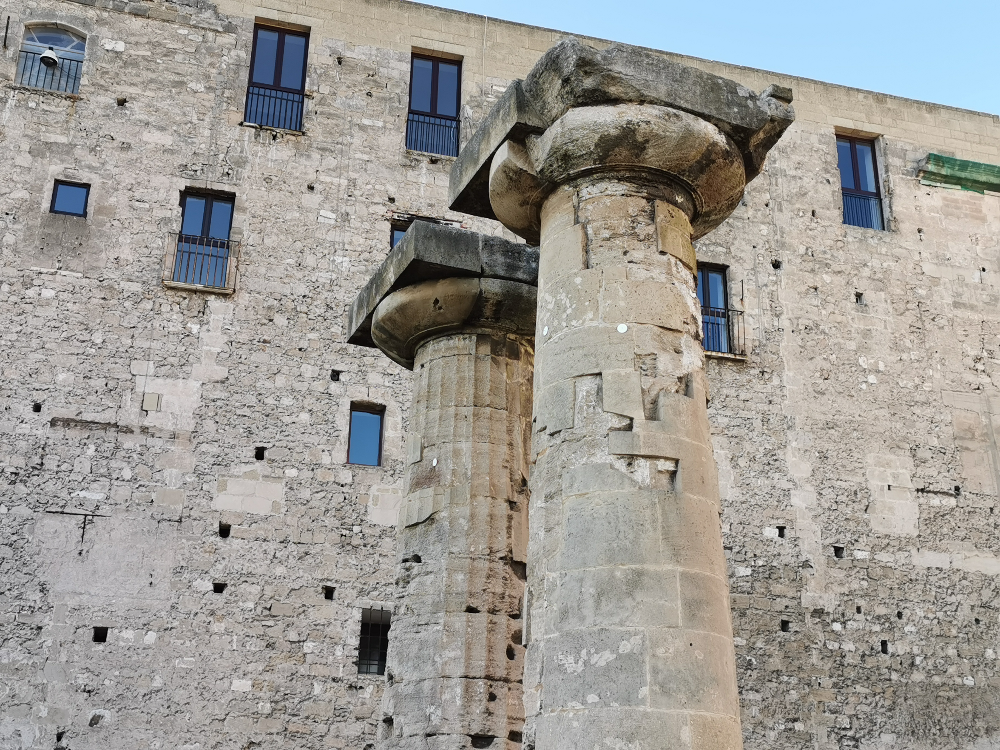
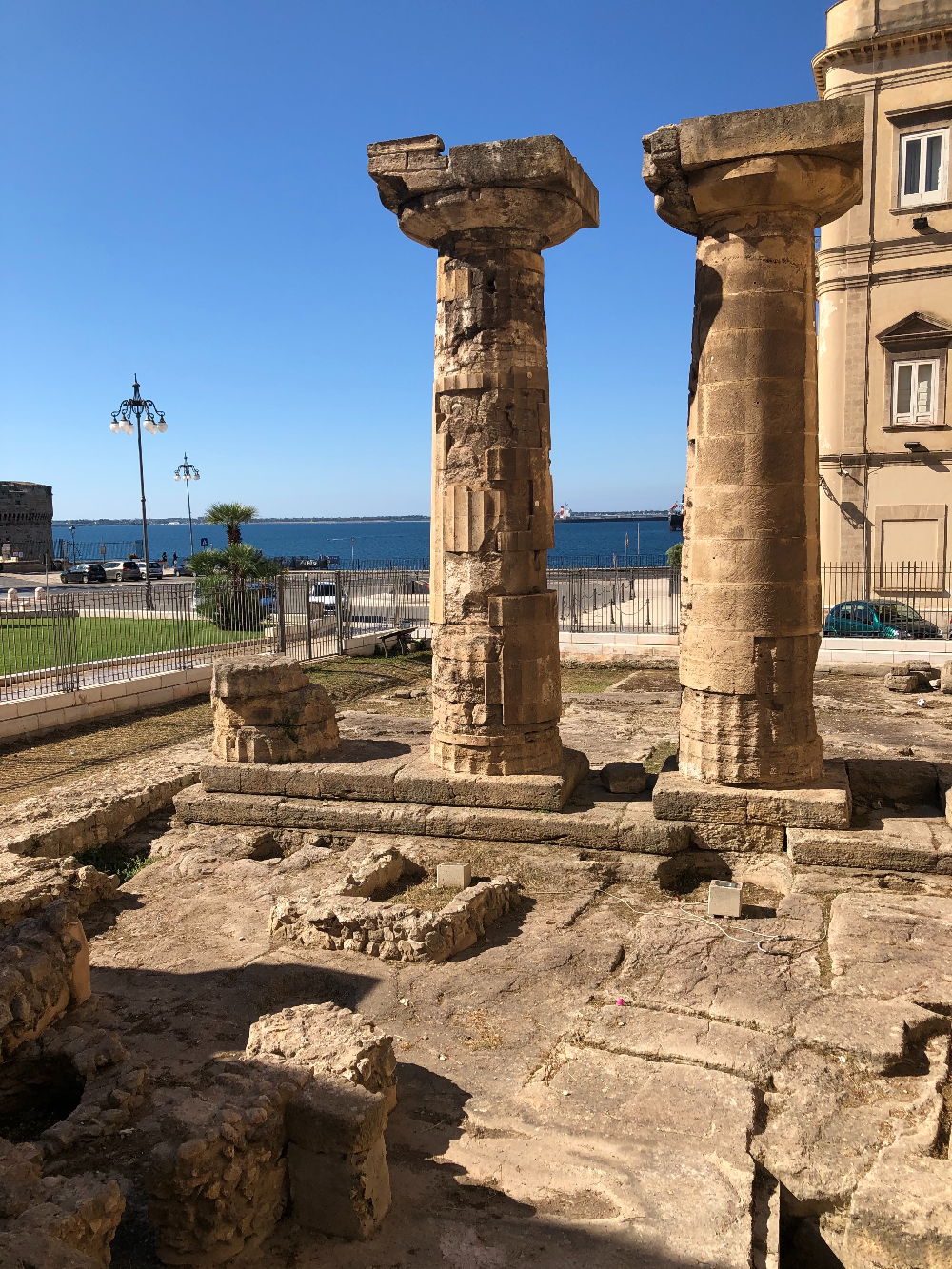
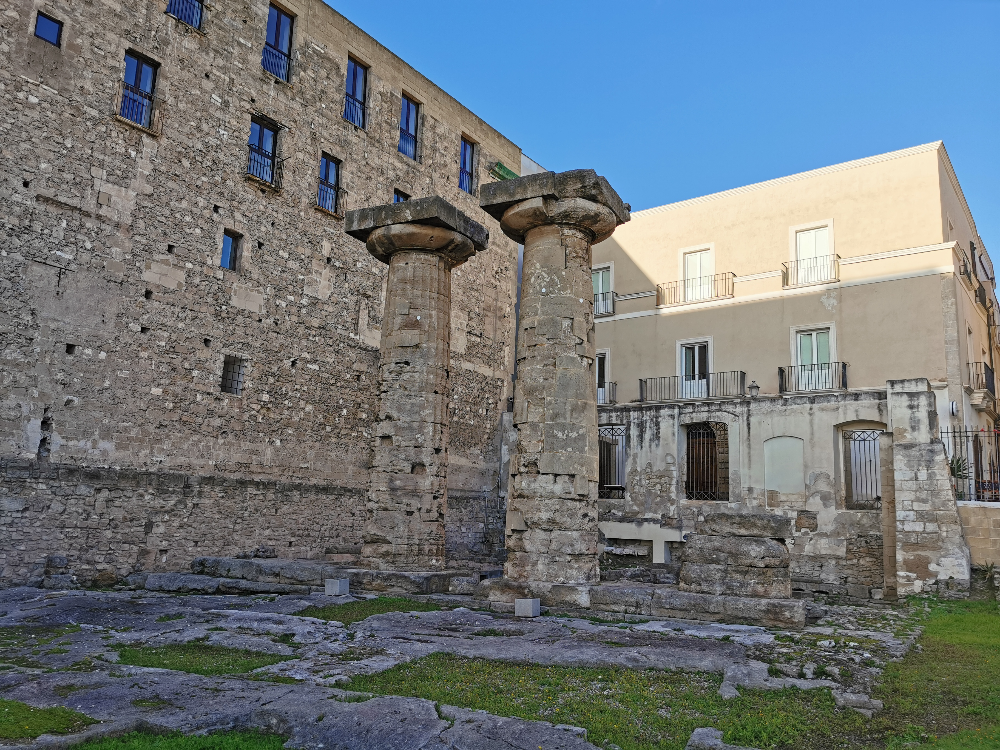
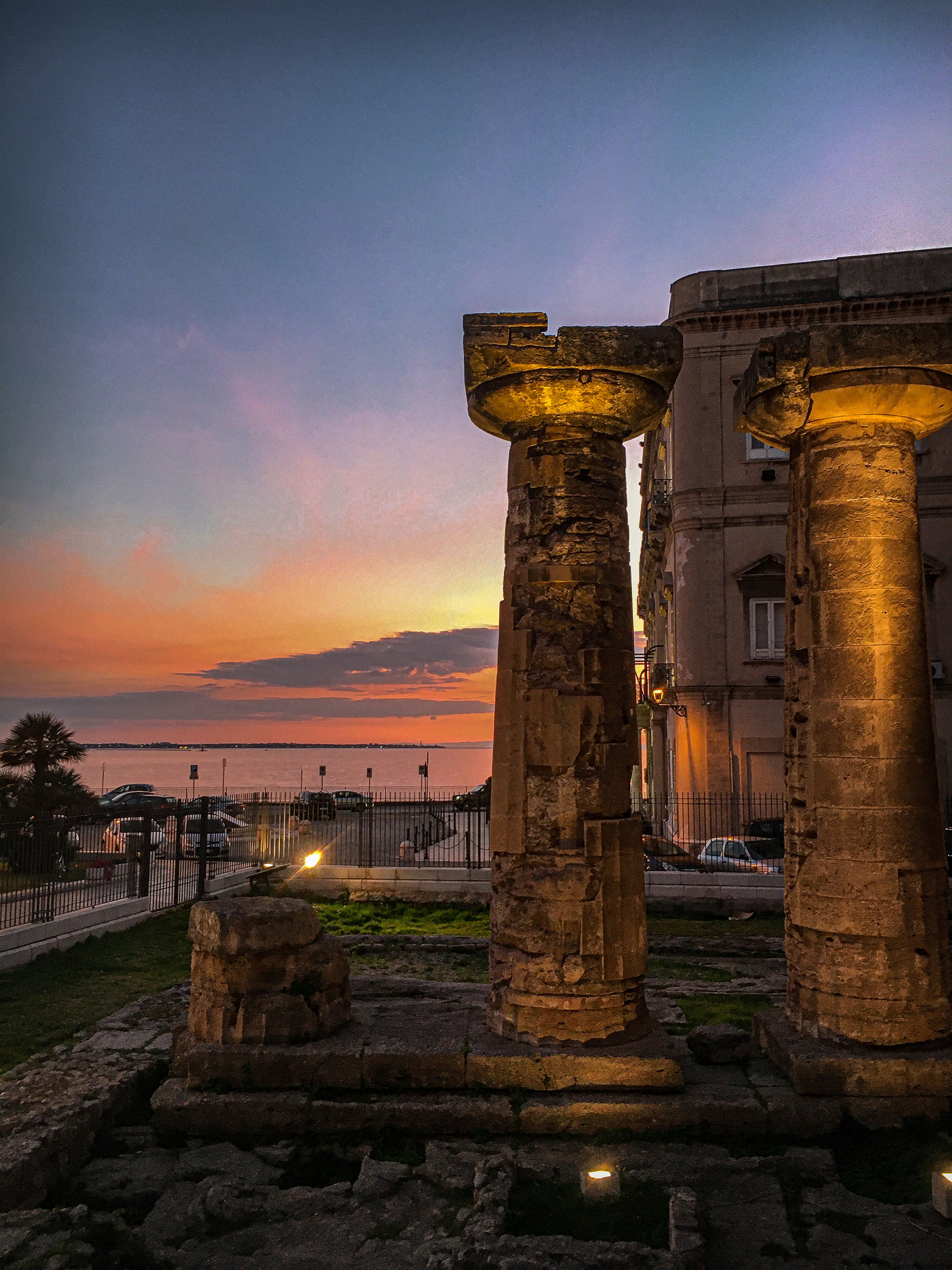
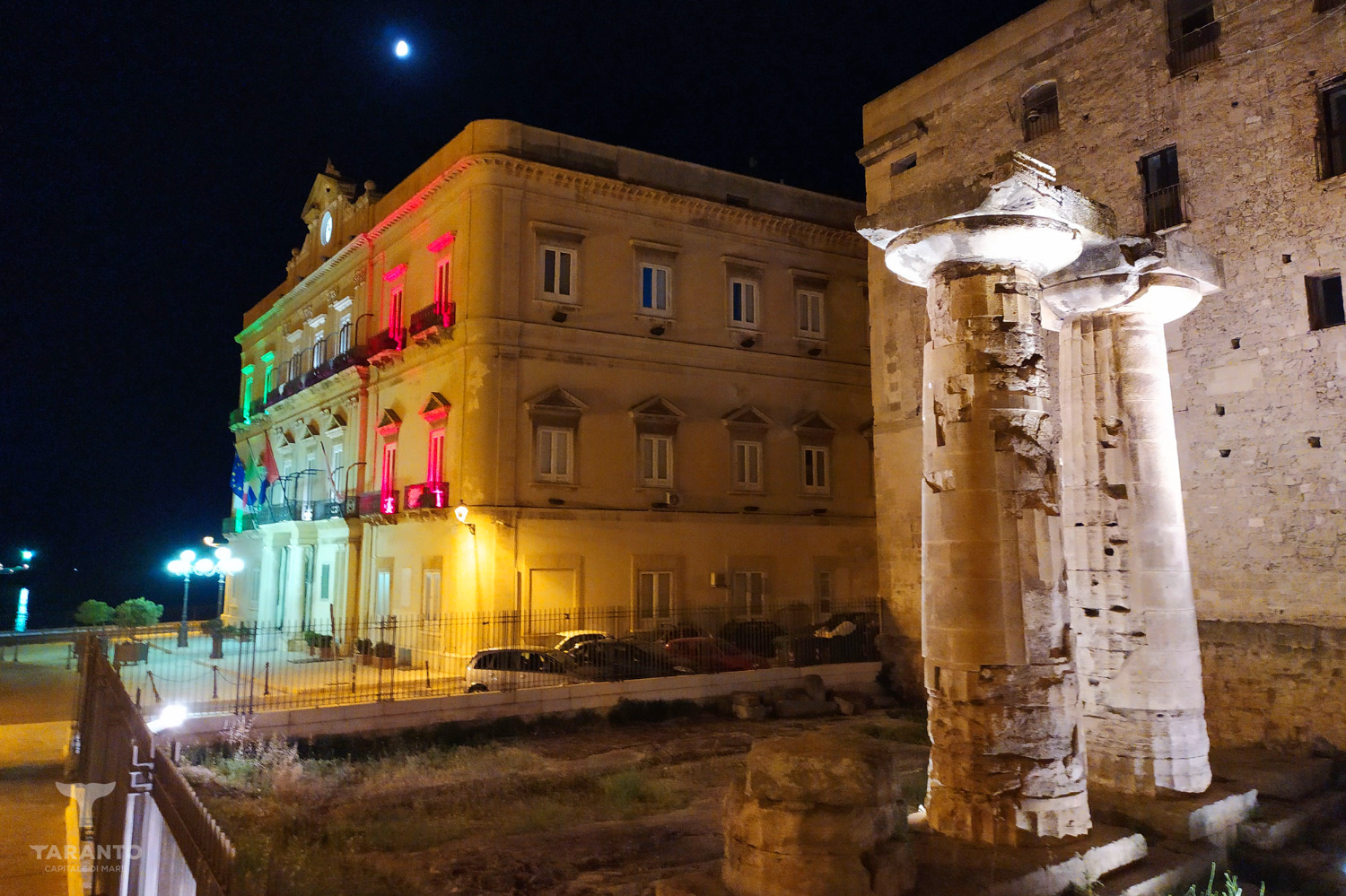
Columns of the Doric Temple
Archeology
The Columns, now visible in Piazza Castello, were part of a temple from the Magna Graecia period and can be dated to the beginning of the sixth century. B.C. The large place of worship, certainly dedicated to a female deity, was one of the temples and public buildings that occupied the city's acropolis. Of the structure which in ancient times had six or eight columns on the short side and fifteen or seventeen on the long side, only two and part of a third remain. The dating of the temple to the first twenty-five years of the sixth century. B.C. make it the oldest in all of Magna Graecia.
Archaeological investigations have reconstructed much of the events following the construction of the place of worship, which from a very simple building probably made of wood and adobe, has acquired increasingly monumental dimensions to be abandoned, probably, with the Roman capture of the city.
The area, during the Late Antiquity era, was almost certainly used as a quarry area and then used for homes or functional environments equipped with silos and granaries. If the datum of Lombard attendance is practically absent, it is possible to hypothesize that in the pagan sacred area, since the 10th century AD, a small Christian church had been created whose presence is attested since the late Middle Ages.
From the analysis of some sources it is possible to state that the small place of worship, which perhaps incorporated part of the ancient structures, was dedicated to Santa Maria dei Martiri. In the following centuries, the urban space seems to have been occupied by houses and production areas which were then replaced by the Celestini Convent demolished in 1926-1927 and by the church of the Holy Trinity demolished in the 1970s.
The Columns, now visible in Piazza Castello, were part of a temple from the Magna Graecia period and can be dated to the beginning of the sixth century. B.C. The large place of worship, certainly dedicated to a female deity, was one of the temples and public buildings that occupied the city's acropolis. Of the structure which in ancient times had six or eight columns on the short side and fifteen or seventeen on the long side, only two and part of a third remain. The dating of the temple to the first twenty-five years of the sixth century. B.C. make it the oldest in all of Magna Graecia.
Archaeological investigations have reconstructed much of the events following the construction of the place of worship, which from a very simple building probably made of wood and adobe, has acquired increasingly monumental dimensions to be abandoned, probably, with the Roman capture of the city.
The area, during the Late Antiquity era, was almost certainly used as a quarry area and then used for homes or functional environments equipped with silos and granaries. If the datum of Lombard attendance is practically absent, it is possible to hypothesize that in the pagan sacred area, since the 10th century AD, a small Christian church had been created whose presence is attested since the late Middle Ages.
From the analysis of some sources it is possible to state that the small place of worship, which perhaps incorporated part of the ancient structures, was dedicated to Santa Maria dei Martiri. In the following centuries, the urban space seems to have been occupied by houses and production areas which were then replaced by the Celestini Convent demolished in 1926-1927 and by the church of the Holy Trinity demolished in the 1970s.
Go back to the past by your smartphone
Explore the Doric Columns through the virtual tour and discover what the temple was like in the past
Tourist route
Discover the recommended tourist route to visit the Doric Columns and other points of historical and cultural interest in the nearby,
Nearby
Do you want to continue the tour? The Cathedral of San Cataldo is not far away! Discover the artistic and cultural heritage of the Taranto Cathedral just a few steps away
Columns of the Doric Temple
Archeology
The Columns, now visible in Piazza Castello, were part of a temple from the Magna Graecia period and can be dated to the beginning of the sixth century. B.C. The large place of worship, certainly dedicated to a female deity, was one of the temples and public buildings that occupied the city's acropolis. Of the structure which in ancient times had six or eight columns on the short side and fifteen or seventeen on the long side, only two and part of a third remain. The dating of the temple to the first twenty-five years of the sixth century. B.C. make it the oldest in all of Magna Graecia.
Archaeological investigations have reconstructed much of the events following the construction of the place of worship, which from a very simple building probably made of wood and adobe, has acquired increasingly monumental dimensions to be abandoned, probably, with the Roman capture of the city.
The area, during the Late Antiquity era, was almost certainly used as a quarry area and then used for homes or functional environments equipped with silos and granaries. If the datum of Lombard attendance is practically absent, it is possible to hypothesize that in the pagan sacred area, since the 10th century AD, a small Christian church had been created whose presence is attested since the late Middle Ages.
From the analysis of some sources it is possible to state that the small place of worship, which perhaps incorporated part of the ancient structures, was dedicated to Santa Maria dei Martiri. In the following centuries, the urban space seems to have been occupied by houses and production areas which were then replaced by the Celestini Convent demolished in 1926-1927 and by the church of the Holy Trinity demolished in the 1970s.
contacts
Piazza Castello, 74123, taranto
useful information
accessible
- always accessible